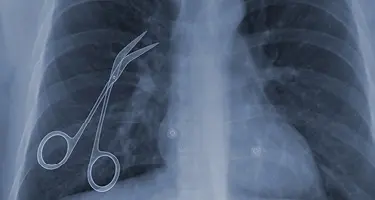How do you know if you or a family member have been a victim of medical malpractice? Identifying medical malpractice can be challenging. Malpractice occurs when a medical provider is negligent in the care provided to a patient that results in injury or death. And malpractice happens more often than you might think. According to a study by John Hopkins, medical errors are now the third leading cause of death in the U.S., resulting in approximately 250,000 deaths per year. That is the equivalent of two, fully loaded jumbo jets crashing daily. With all the advances in medical knowledge and experience, why are there so many medical errors and what can be done to reduce them?
We are a nation of laws, which aim to keep our community safe and to protect the rights of our citizens. For example, when we drive a car, we must stop at red lights, reduce our speed in school zones, and yield as we enter a highway. These so-called rules of the road help keep us safe from harm when we drive to work or drive a carpool for our kids. Just like drivers must follow the rules of the road, medical professionals also have rules they must follow in their respective professions. Nurses must dispose of dirty needles in the proper receptacle, and doctors must wash their hands before surgery, as just two examples. When medical professionals break the rules of the road for their medical or nursing specialty and cause harm to a patient, our legal system is designed to hold them accountable.
How then, are legal professionals able to identify when and how these rules are broken?
Mixed Signals
Communication is essential for safe medicine. Nurses, doctors, and other health care professionals must communicate timely, accurately, and clearly with each other to ensure patient safety. In many instances, a case depends on being able to prove when a doctor or nurse has treated a patient but somehow failed to communicate appropriately with either the patient or fellow medical staff members. You can imagine the harm that may ensue if a physician is not informed of test results, or worse, is given information about the wrong patient. A patient can be seriously harmed when a health care provider passes on incomplete medical information or delays a critical communication. The integrity of patient-related information is extremely important in the medical context because there are often many health care providers involved in the treatment and care of a patient at different time periods. You often have physicians and nurses working different shifts that are accessing patient records or medical providers in a different department relying on the information entered previously by another medical staff member. For example, if a medical provider identifies a patient allergy to an antibiotic and that information somehow does not get properly communicated to the next medical provider, the patient could receive the antibiotic and suffer anaphylactic shock leading to death.
Too Fast for Conditions
Excessive speed is dangerous on the road, and it is no different in the medical care context. Due to increasing pressure to see more patients in a limited amount of time, physicians must treat patients quickly which can lead to errors. The higher the volume of patient traffic, the more likely that a doctor or nurse has to divide their focus and time among different patients. In such situations, medical professionals are more prone to make mistakes as medical assessment and data entry into the medical record is dangerously accelerated. Medical malpractice can occur when the quality of patient care is compromised because health care professionals are rushing through as many patients as possible. Just as the likelihood of a car wreck increases the faster you drive, the danger of medical malpractice also increases when speed takes priority over safety.
A lack of speed or urgency can also lead to disastrous results where the patient’s condition requires prompt treatment. In a recent case in Columbus, Georgia, for example, a patient with a history of recent neck surgery returned to the hospital with a swollen neck and inability to swallow. The ER physician quickly identified the likely culprit—a large blood clot in the neck that was pressing on the esophagus. The patient was admitted to the ICU, but the admitting physician waited almost six hours before coming to her bedside to treat her. When the doctor finally came to see her, the patient went into respiratory failure and suffered catastrophic and irreversible brain damage, all of which could have been avoided by timely treatment. Jurors ultimately held the hospital responsible and returned a verdict of $26 million.
Whether treatment is carried out too quickly or too slowly, improper timing of care can lead to catastrophic outcomes. The expectation of “working faster” may be good for the bottom line for a medical corporation, but can expose the patient to unnecessary harm.
Improper Lane Change
Malpractice can also result when a physician is practicing in a field in which they are not adequately trained. Just as a driver is required to demonstrate their knowledge of the rules of the road as well as their driving skills to obtain a license, aspiring physicians must also stay on par with the standard of care within their specialty when practicing medicine. But sometimes physicians leave their lane and travel into a field of medicine beyond their skill set. For example, more and more family care physicians are getting hired as “hospitalists” where they are responsible for admitting patients from the emergency department into the main hospital. Family care or primary care doctors are generally adept at treating colds and flu and managing patients with diabetes, they generally do not have adequate training in identifying neurologic or cardiac issues which are often encountered in a hospital setting. When physicians leave their lane of medical expertise, it can lead to disastrous outcomes for the patient.
Determining whether a medical professional has committed malpractice requires a thorough understanding of the medical rules of the road – or the “standard of care” as the rules are known in medical care. Lawyers representing victims of medical malpractice must have a thorough understanding of the medicine to identify the relevant rules that may have been violated. Just as our roads are dangerous places that require each of us to adhere to certain agreed-upon safety rules, so too must the medical community follow the well-established rules that help keep patients safe.
----------
With more than 25 years of legal experience, Lloyd Bell has built a sterling courtroom record and recovered millions of dollars for medical malpractice victims. A veteran of the U.S. Army JAG Corps, Bell founded his own law firm in 1999, and he is consistently recognized as one of the top attorneys in his field. In 2018, Bell Law Firm was recognized as Personal Injury Litigation Team of the Year by The Daily Report, the leading source of legal news in Atlanta.
































